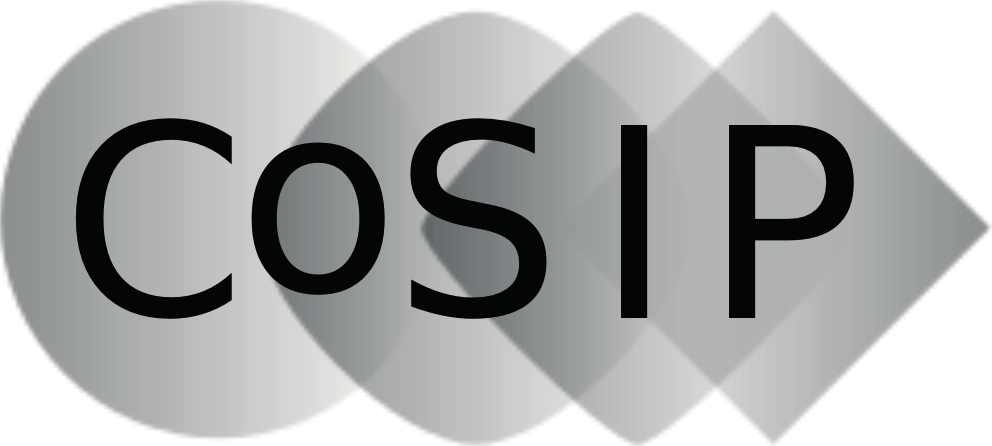Estimation of covariance matrices satisfying sparsity priors
Schätzung von Kovarianzmatrizen unter sparsity-Annahmen
- Professor Götz Eduard Pfander, Ph.D.
Jacobs University Bremen gGmbH
Faculty Mobility
Department of Mathematics and Logistics
- Dr.-Ing. Volker Pohl
Technische Universität München
Fakultät für Elektrotechnik und Informationstechnik
Zusammenfassung
Compressive Sensing basiert auf der Beobachtung, dass viele hochdimensionale Signale bereits durch eine relativ kleine Anzahl von signalabhängigen Parametern beschrieben werden können. In anderen Worten, der relevante Signalraum ist die nichtlineare Vereinigung von niedrig dimensionalen Unterräumen eines hochdimensionalen Raumes. Das Ziel in Compressive Sensing ist ein solches Signal basierend auf wenigen linearen Messungen zu rekonstruieren. Die Anzahl der Messungen soll dabei, bis auf logarithmische Faktoren, linear von der Anzahl der aktiven Parameter abhängen.
Das hier beschriebene Projekt behandelt das Problem der Schätzung von Kovarianzmatrizen welche eine Sparsity-Annahme, wie zum Beispiel kleiner Rang oder geringe Anzahl von Null verschiedener Einträge, erfüllen. Im Fall dass die Kovarianzmatrix einer linearen Projektion des untersuchten zufälligen Vektors geschätzt werden kann, lässt sich das Kovarianz- Schätzproblem auf ein scheinbar normales Compressive Sensing Problem zurückführen. Bei genauerem Hinblick fällt allerdings auf, dass die dem Compressive Sensing Problem unterliegende Messmatrix das Kroneckerprodukt der sogenannten Sketching-Matrize mit sich selber ist. Dies führt zu unerwünschten Abhängigkeiten der Einträgen der Messmatrix. Um dieses Problem zu umgehen betrachten wir sehr restriktive Sparsity- Bedingungen, wie zum Beispiel d-verteilte Sparsity. Als Sketching-Matrizen behandeln wir numerisch als auch analytisch sowohl Matrizen deren Einträge Gauss oder auch Bernoulli verteilt sind, aber auch strukturierte Matrizen, wie partielle Fourier oder partielle zyklische Matrizen werden in Betracht gezogen. Als Anwendung betrachten wir das Schätzproblem für Zeitvariante Kanäle. Diese sind relevant in Kommunikations-, Sonar- und Radaranwendungen.
In Anwendungen in denen Kovarianzmatrizen bekannterweise kleinen Rang haben, werden wir Ergebnisse und Methoden aus dem Bereich des Phase Retrieval erweitern.
Summary
Compressive sensing methodology is based on the observation that many high-dimensional signals can be described by a small number of signal dependent active parameters.
Mathematically speaking, it is assumed that the signal space is the nonlinear union of low dimensional subspaces in a high dimensional ambient space; the goal is to recover the signal from a number of linear measurements that is, up to log factors, linear in the number of active parameters. In this project, the problem of estimating covariance matrices that satisfy sparsity priors, such as low rank or few nonzero entries / low correlation, is analyzed. If a reliable estimator for the covariance of a lower dimensional linear image of the random vector in question is available, then the low- correlation covariance recovery problem translates directly into a seemingly standard compressive sensing problem. Unfortunately, the underlying measurement matrix is the Kronecker product of a so-called sketching matrix with itself; therefore, it features very undesirable dependencies of matrix entries.
To address this problem, restrictive sparsity concepts such as d-distributed sparsity are considered in this project. As sketching matrix, Gaussian, Bernoulli, but also structured sketching matrices such as partial Fourier and partial circular matrices are numerically and analytically explored. As application, the estimation problem for time-varying channels which is relevant in mobile and sonar communications, as well as in radar, is considered. Insights from phase retrieval will be applied if the covariance matrix in question is assumed to be low rank.
Preprints
G. E. Pfander and P. Salanevich, Robust Phase Retrieval Algorithm for Time-Frequency Structured Measurements, November 2016.
D. G. Lee, G. E. Pfander, V. Pohl, W. Zhou, Identification of multiple-input multiple-output channels under linear side constraints, January 2017
D. G. Lee, A. Kaplan, V. Pohl, Permissible support patterns for identifying the spreading function of time-varying channels, January 2017
A. Kaplan, V. Pohl, D. G. Lee, On Compressive Sensing of Sparse Covariance Matrices using Deterministic Sensing Matrices, January 2017
A. Kaplan, V. Pohl, D. G. Lee, The Statistical Restricted Isometry Property for Gabor Systems, January 2017
P. Walk, P. Jung, G. E. Pfander, B. Hassibi, Blind Deconvolution with Additional Autocorrelations via Convex Programs, January 2017
Publications
V. Pohl, H. Boche and C. Yapar, Modulated Wideband Converter for Compressive Phase Retrieval of Bandlimited Signals, 11th Intern. ITG Conf. on Systems, Communications and Coding (SCC), Hamburg, Germany, Feb. 2017
H. Boche and V. Pohl, Limits of Calculating the Finite Hilbert Transform from Discrete Samples, Appl. Comput. Harmon. Anal., March 2017.
H. Boche and V. Pohl, Peak Value Blowup of Approximations of the Hilbert Transform of Signals with Finite Energy, American Control Conf. (ACC), Seattle, WA, USA, May 2017
P. Walk, P. Jung, G. E. Pfander, On the stability of sparse convolutions, Applied and Computational Harmonic Analysis, vol. 42, no. 1, 117-134, Jan. 2017.
V. Pohl, N. Li, and H. Boche, Phase Retrieval in Spaces of Analytic Functions in the Unit Disk, 12th Intern. Conf. on Sampling Theory and Applications (SampTA), Tallin, Estonia, Jul. 2017, 336–340
G. E. Pfander and W. Zhou, Irregular Orthonormal Gabor Basis in Finite Dimensions and Applications, 12th Intern. Conf. on Sampling Theory and Applications (SampTA) (Tallin, Estonia, July 2017).
D. G. Lee, G. E. Pfander, V. Pohl, W. Zhou, Identification of multiple-input multiple-output channels under linear side constraints, ICASSP 2018, April 2018
D. G. Lee, A. Kaplan, V. Pohl, Permissible support patterns for identifying the spreading function of time-varying channels, ICASSP 2018, April 2018
A. Kaplan, V. Pohl, D. G. Lee, On Compressive Sensing of Sparse Covariance Matrices using Deterministic Sensing Matrices, ICASSP 2018, April 2018.

